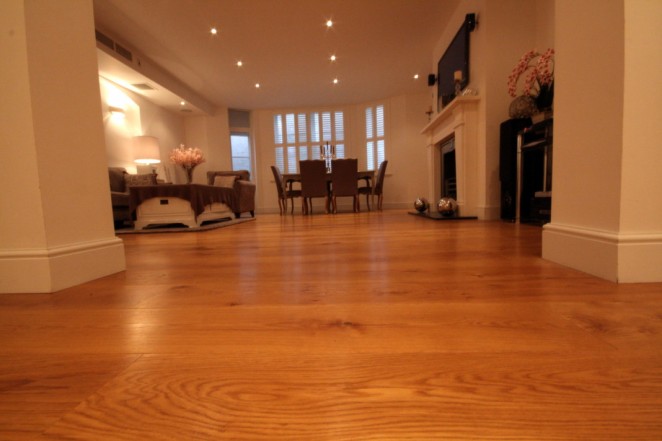When considering a new floor, if the choice is to go for a wood look then the idea of an easy to fit laminate floor might seem appealing. They offer lots of benefits to homeowners, but here, we explain why real wood wins out even on costs grounds.
Laminate and real Wood Floorings
Laminate wood flooring is a totally man-made material made from composite wood pressed together at high temperatures. An image of a hardwood type then covers this and the whole is covered in a clear and hard layer. This makes for a relatively low cost option, as the product is available for around half the cost of wood flooring.
It should not be confused with engineered wood, which some think is basically the same thing. It isn’t: engineered wood is real wood, albeit made up of different cuts and types and topped off with a single wood layer.
Real wood flooring is – as its name suggests – flooring made from single planks of real wood of various types, including oak, walnut, beech and mahogany.
Real Wood Versus Laminates
Installation
many are aware that real wood benefits from professional installation whereas laminated flooring can be installed by someone with some DIY experience. While this is partly true, it’s not quite as simple as that.
Installing real wood flooring is less expensive than it perhaps used to be as the planks are usually pre-cut into tongues and grooves making the job quicker and easier. Laminates still often benefit from expert installation – a professional will nearly always be a better option than a willing DIY-er.
Cost
while real wood starts as more expensive than laminates, over a period of time the cost should balance out somewhat. A real wood floor can last for many years if looked after well, while a laminate floor will possibly need replacing within 20 years.
Appearance
while the ‘wood effects’ on laminates have become more realistic over the years, wood is still wood and there is a definite difference. This is especially critical in situations where anything suggesting ‘not the real thing’ would impair the looks. The aesthetics of an older property with exposed beams and many original features would suffer if a laminate floor looked in any way unrealistic.
Damage
if a hard wood floor suffers a damage-causing a blemish like a scar or a slight dent, it will likely not affect its look too much. Indeed, it may just blend in with the ‘natural flaws’ of a traditional ‘wood look.’ If similar damage occurs to a laminate floor, then it will tend to stick out and look odd against the rest of the laminate’s artificially perfect look.
Repair
some laminates can have individual planks or sections removed and replaced, although it may be a challenge finding the matching colour and design if replacements are required some time after it was first bought and laid down. Even if the replacements match the original floor, then sunlight, wear and fading might make the existing flooring look different in appearance to the replacements.
Real wood is easier to repair than laminate. Planks can be replaced easily enough if required with wood of the same type, and more extensive overall damage can be repaired with sanding and staining, which isn’t possible with laminates.
Environmentally Friendly
real wood floors are fully organic while laminates consist of the bonding of artificial substances and the use of resins. Some of these resins and glues can continue to emit toxins into the air for a while after the laminate is laid.
Wood Wins
Even some of the perceived differences in cost, such as installation, are narrower when you consider the above points. In other respects, a real wood floor wins out over laminate flooring simply because it is the real thing.
While laminates have come a long way, a real wood floor responds better to the demands of everyday use. Not least the repair options – after all, mishaps happen and a real wood floor can deal with those time and again whereas one piece of damage might mean the required replacement of most or all of a laminate floor.
Joe Bishop is the director of William Beard Flooring, a luxury hardwood flooring specialist. Joe has over 11 years’ experience in working with timber flooring and is a highly skilled installer and restorer of wooden floors.
